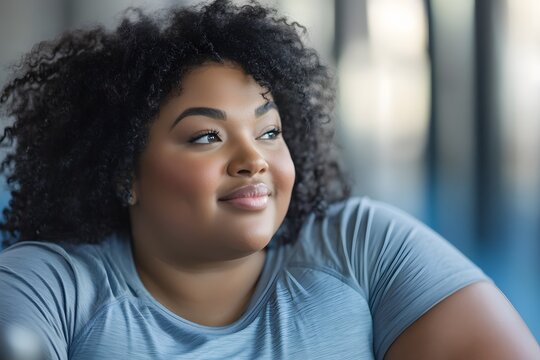Celebrating Body Diversity: What Science Really Says About Curvier Figures
In today’s social media-driven world, diverse female body types—especially curvier physiques—are more visible and celebrated than ever. While some online narratives may exaggerate or objectify these traits, it’s essential to explore them with respect, clarity, and a foundation in science.
A woman’s body shape—whether it includes fuller hips or a pronounced gluteal area—is shaped by a complex mix of genetics, hormones, lifestyle choices, and overall health. These natural variations are far more meaningful than the myths or assumptions often found online.
In this article, we dive into the latest research on body composition, waist-to-hip ratios, and how cultural attitudes toward curvy bodies have evolved. Drawing from credible sources like the World Health Organization (WHO), Harvard Health, and peer-reviewed studies, we aim to provide a thoughtful, informed perspective on body diversity.
What Shapes a Woman’s Body? The Science Behind Curves and Contours
A woman’s body shape is largely determined by her genetics, but there’s much more to the story. Elements like bone structure, muscle mass, fat distribution, and hormone levels all work together to create the unique silhouettes we recognize as pear, apple, hourglass, or rectangular.
One key player in shaping the female form is estrogen—the primary female hormone. It influences how and where fat is stored, particularly around the hips, thighs, and buttocks. These changes typically begin during puberty and are not only natural but essential for reproductive health and overall metabolism.
In this article, we dive into the science behind body composition and the waist-to-hip ratio, exploring both biological factors and cultural views on curvy figures. Backed by insights from reputable sources like the World Health Organization (WHO), Harvard Health, and peer-reviewed medical journals, we’ll uncover what truly defines the female form—beyond beauty standards.
Sources:
– Harvard Health
– Mayo Clinic
– National Institutes of Health – PubMed Central
The Role of the Gluteal Muscles
The glutes—made up of the gluteus maximus, medius, and minimus—are the powerhouse muscles that shape the buttocks. These muscles play a crucial role in maintaining good posture, supporting balance, and powering everyday movements like walking, climbing stairs, and lifting.
Well-developed glutes can enhance the body’s curves, often a result of consistent strength and resistance training. On the other hand, fat distribution in the gluteal area varies from person to person, influenced by factors such as metabolism, diet, and hormone levels.
Targeted workouts like squats, lunges, and hip thrusts are popular in fitness routines because they not only sculpt and tone the glutes but also boost overall strength and mobility. That’s why fitness experts often prioritize glute training—for both its visual appeal and its functional benefits.
Sources:
– American Council on Exercise (ACE)
– National Strength and Conditioning Association (NSCA)
Waist-to-Hip Ratio: A Health Indicator
The glutes—made up of the gluteus maximus, medius, and minimus—are the powerhouse muscles that shape the buttocks. These muscles play a crucial role in maintaining good posture, supporting balance, and powering everyday movements like walking, climbing stairs, and lifting.
Well-developed glutes can enhance the body’s curves, often a result of consistent strength and resistance training. On the other hand, fat distribution in the gluteal area varies from person to person, influenced by factors such as metabolism, diet, and hormone levels.
Targeted workouts like squats, lunges, and hip thrusts are popular in fitness routines because they not only sculpt and tone the glutes but also boost overall strength and mobility. That’s why fitness experts often prioritize glute training—for both its visual appeal and its functional benefits.
Source: World Health Organization – Waist-to-Hip Ratio Guidelines
Cultural Perceptions of Curves
Throughout history and across cultures, the ideal female body has taken many forms. In various societies—particularly in African, South American, and Mediterranean regions—curvier physiques, especially fuller hips and buttocks, have long been celebrated as symbols of fertility, prosperity, and vitality.
In contrast, modern media has often pushed narrow and unrealistic beauty ideals, creating pressure to conform to a single standard. Fortunately, that narrative is shifting. Movements like Body Positivity, campaigns such as Dove’s Real Beauty, and the influence of diverse fitness advocates are helping to redefine beauty. Today, there’s a growing celebration of all body types—whether curvy, lean, muscular, or plus-size—encouraging self-confidence and body acceptance for everyone.
Sources:
– Body Image Research – Psychology Today
– National Eating Disorders Association (NEDA)
Are There Health Benefits to Having More Gluteal Fat?
Research has shown that lower-body fat, particularly in the hips and thighs, may be metabolically protective. A study from the University of Oxford, published in the International Journal of Obesity, found that women with more fat in their hips and buttocks had a lower risk of heart disease and type 2 diabetes compared to those with more abdominal fat.
That said, overall health is not defined by one body area. Fitness, mobility, mental well-being, and diet are equally (if not more) important than body shape alone.
Source: International Journal of Obesity – University of Oxford Study
Media Responsibility and Avoiding Objectification
It’s critical for media, brands, and influencers to handle content featuring body types responsibly. Images focused solely on appearance—especially when they emphasize one body part in a sexualized manner—can reinforce objectification, unrealistic expectations, or body dissatisfaction, particularly among young audiences.
Google Ads and other platforms have strict policies prohibiting explicit, misleading, or sexually suggestive content. Ethical communication about the human body should focus on health, empowerment, and education, not sensationalism.

Promoting Respectful Body Awareness
To foster a culture of body confidence, public health organizations encourage education around anatomy, nutrition, exercise, and emotional wellness. Teaching both youth and adults about respect for their own and others’ bodies promotes long-term mental and physical health.
Images of strong or curvy bodies can be used in positive and inspiring ways, especially when presented with context that values personal achievements, fitness goals, or lifestyle balance, rather than clickbait or objectifying titles.

Conclusion: Embrace Diversity, Focus on Health
The takeaway from science, health organizations, and cultural analysis is clear: there is no one “ideal” body type. What matters most is how you feel, how you care for your body, and how you respect others. Whether someone has a lean frame, muscular build, or a naturally curvier shape, all bodies deserve respect and accurate representation.
The next time you see an image online, take a moment to reflect beyond appearance. Celebrate the person, not the stereotype. And if you’re sharing content, ensure it contributes positively to the conversation.






